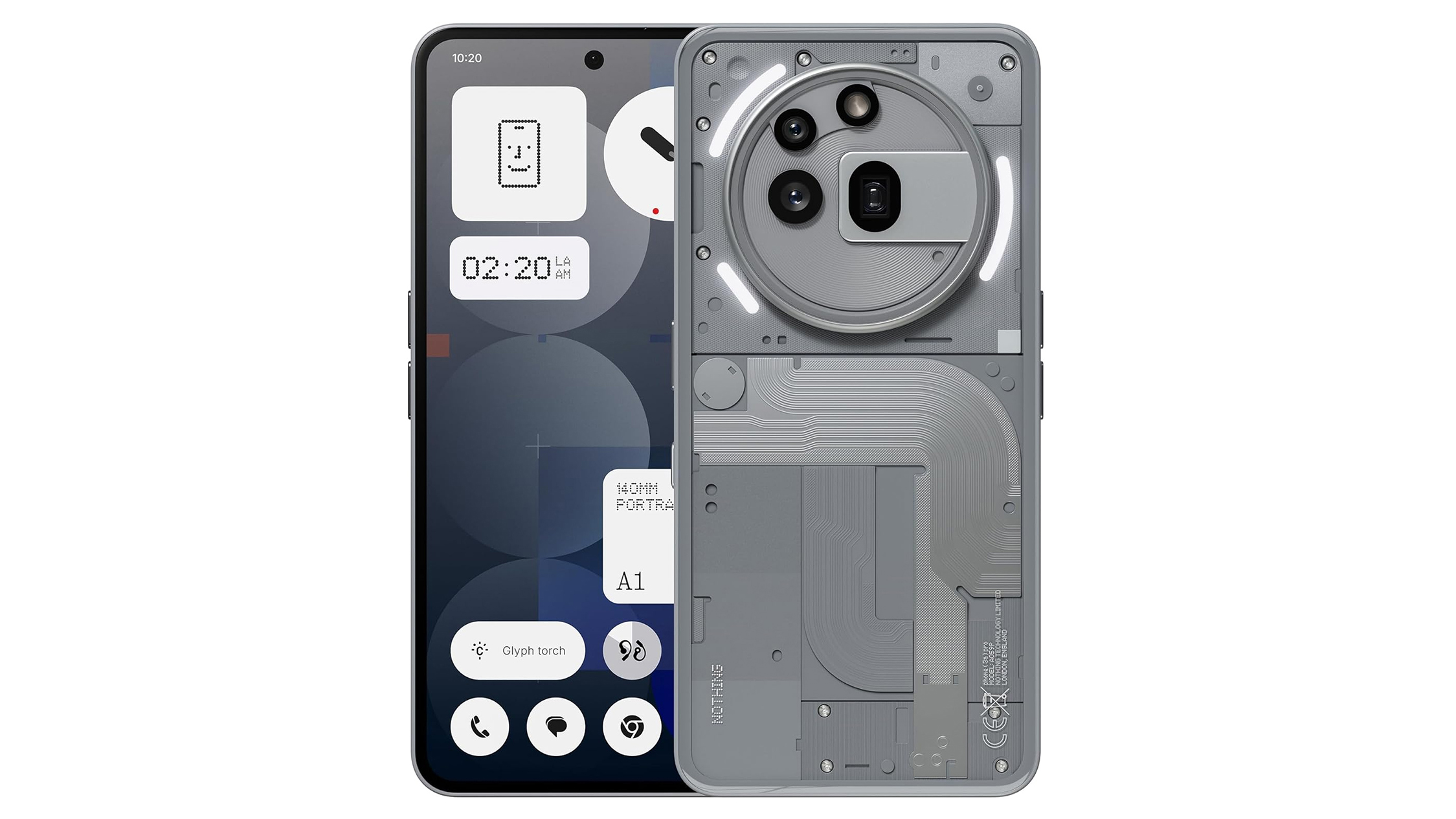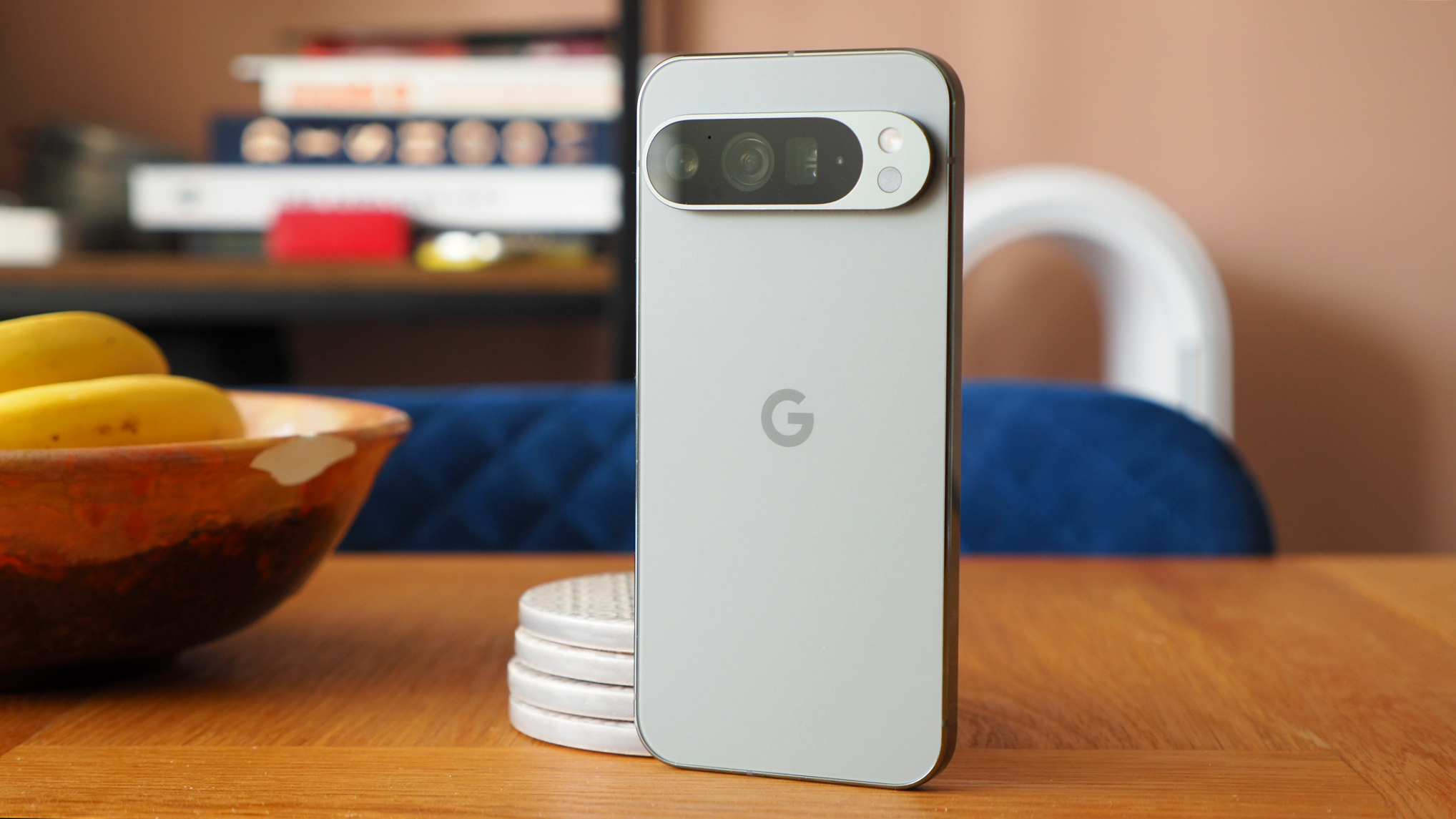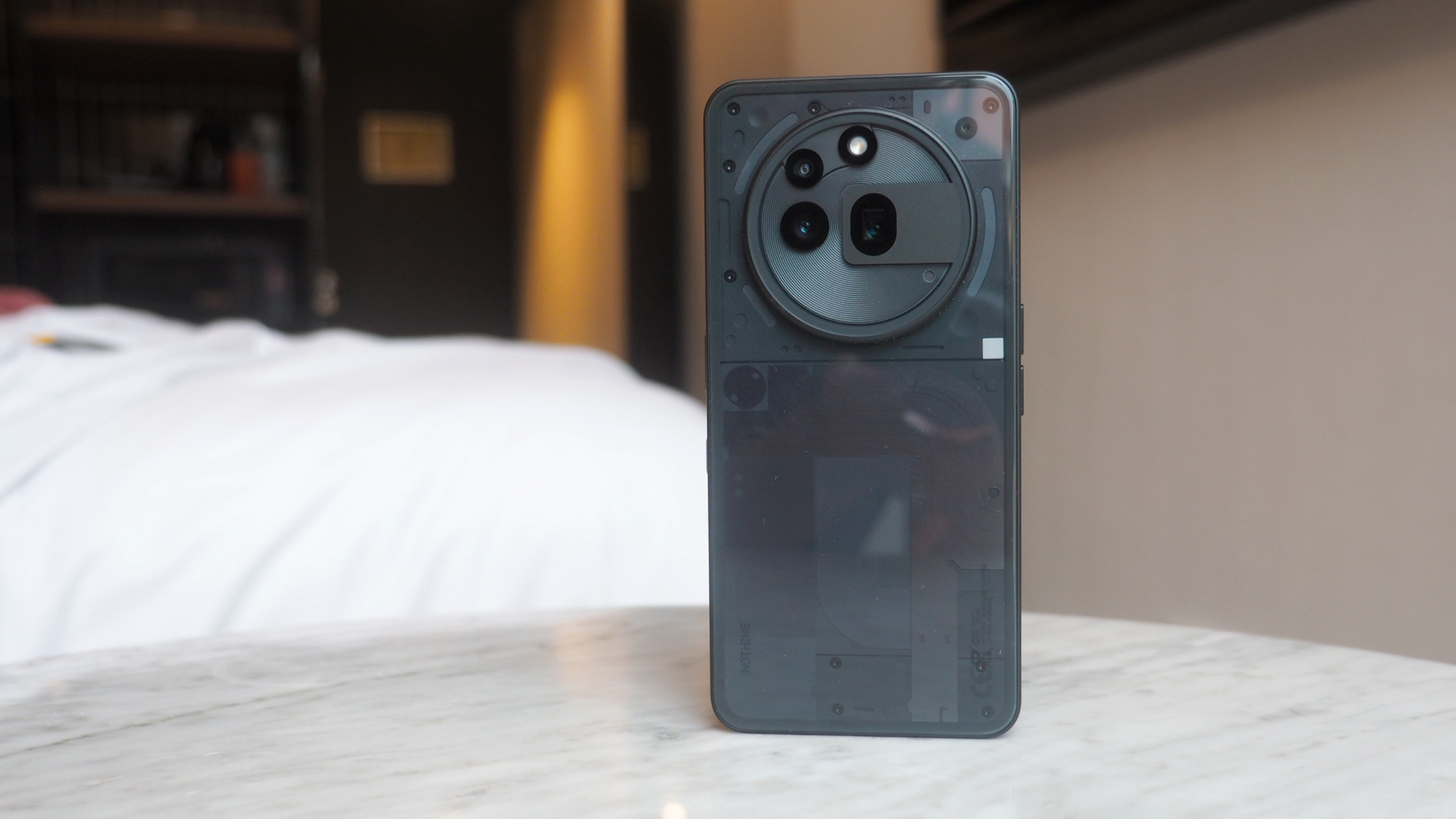

There have been so many incredible Android phone launches over recent years. But which Android handsets are the best of the best? Plenty fall into our best phones list, of course, but this page is completely Apple-free and for fans of Google's Android operating system only.
We've been busy reviewing all the latest and greatest phones running Google's mobile OS, which we've compiled into this handy best-of guide – it combines the most premium Android flagships with more affordable, lower-spec, cost-effective alternatives, and some higher-end future-facing foldables too (check out our best folding phones guide for a fuller list).
Below, we've rounded up the best Android phones on the market today, including models from Samsung, Google, Nothing, OnePlus and more. So which Android phone is best for you? Read on to find out your match made in heaven...
7 November 2025: Updated to a Top 5. Latest Google Pixel and new Nothing Phone added; replaced Samsung Galaxy S24 with newer S25 model. Added honourable mentions for foldables and zoom camera picks.
T3 Top Picks

Although not a giant upgrade over its predecessor, Google's XL flagship remains one of the most accomplished Android phones thanks to great battery life and a brilliant point-and-shoot camera system. Its distinctive design is a winner, too, and as the father of Android it'll always be first in line for software updates – with support for 7 years.

The top-tier Samsung handset brings the fight to Google with superb AI features. The Ultra is a larger device, however, and with its integrated S Pen stylus that brings even more advanced use cases. Not that you have to use it: the new curved-edge design and flat-panel display is great in the hand too.

While Google gives a good go with its 'a' series of Pixel handsets, Nothing's more affordable Phone (3a) Pro comes out top. It brings a zoom camera to a lower price point, while its Glyph Lighting system adds a unique notifications system. The performance isn't seamless compared to the flagships, mind, but that comes with the price territory.
Best for most people

Specifications
Reasons to buy
Reasons to avoid
As said in our review: "The Pixel 10 Pro XL is a beautifully balanced experience, offering heaps of power yet superb longevity per charge in a package that's been redesigned with great consideration."
Sure, that camera bump is now rather massive, but the optics within are exemplary – which is a major reason to want to buy Google's biggest-scale flagship. Having the variety, including a periscope optical zoom, really makes a difference.
The display is a beauty, too, at 6.8-inches – there's also the 'normal' Pro model, with a 6.3-inch panel, if you're after a smaller handset. The XL version's scale is what brings a bigger battery, though, and while Samsung's Galaxy S25 Ultra will offer more raw power, the Google handset is very well balanced in performance to longevity.
Sounds like a winner for you? Read our full Google Pixel 10 Pro XL review to learn more
Best premium


Specifications
Reasons to buy
Reasons to avoid
Much as we love Google's hardware, the winner if you're after a super-premium Android handset is the Galaxy S25 Ultra. It won the T3 Awards for Best Phone, after all. This Galaxy comes complete with integrated S Pen stylus, giving it unique use-cases compared to many of its Android competitors.
Not that you have to use the S Pen. Those who don't will still be treated to a super-powerful performance, complete with new flat-panel display that's absolutely stunning. The cameras are upgraded, too, with better zoom and new Galaxy AI features.
The only downside? It's among the priciest of handsets you can buy and the charging, while ample, isn't as fast as some of the Android competition. But as said in our review: "the S25 Ultra is an exercise in refinement, showcasing the best-of-best Android has to offer in 2025."
Want to know more? Read our full Samsung Galaxy S25 Ultra review to decide if this is the top-end Android phone for you
Best budget

Specifications
Reasons to buy
Reasons to avoid
Nothing has been on many people's radar for some years now, the rising star in the Android scene. Its appeal is obvious: offering top-tier specifications in handsets that are creatively designed, yet for a lower price point than much of the competition.
The Phone (3a) Pro is a strong example: it wraps Nothing's classic yet quirky design around a 3x optical zoom lens, which is something that no other brand is able to bring to the table at this kind of price point. Not only that, the unique illuminating Glyph Lights can be programmed for visual notification prompts, adding a point of difference.
It does have some quirks, mind, such as the new Essential Key, which isn't well positioned owed to accidentally triggering it; and the performance from the mid-tier processor here isn't of flagship level. But these are just minor irks in an otherwise stellar affordable handset.
As said in our (3a) Pro review: "When you consider the Nothing Phone (3a) Pro has a major periscope zoom camera, it's savvily positioned against its competition. With a price that undercuts Samsung's A56 and the iPhone 16e, it delivers great value. The new Pro feels like a grown-up package".
Check out our full Nothing Phone 3a (Pro) review to see if this affordable and camera-endowed handset is the Android phone for you
Best alt flagship

Specifications
Reasons to buy
Reasons to avoid
It's not just Google and Samsung that are winners when it comes to the best Android phones. Plenty of other makers offer excellent alternatives – something that OnePlus has been at the forefront of since its conception. Now many generations on, the OnePlus 13 is a great alt-flagship with brilliant features but for less money than many rivals.
As said in our review: "If you're on a tighter budget, the OnePlus is a no-brainer. It's about a third cheaper [compared to Samsung's Galaxy S25 Ultra], and offers a really substantial amount of tech for the price". There's heaps of power, battery life to smash its rivals, and even a decent array of cameras – although oddly the telephoto has been 'downgraded' this generation.
Check out our full OnePlus 13 review to read why we think it's a great Google Pixel alternative
Best small-scale

Specifications
Reasons to buy
Reasons to avoid
The Samsung Galaxy S25 is a people-pleaser, but at a smaller scale than many a flagship. Not only does it look fantastic and feel durable, but it also packs in powerful hardware and software too.
You can even buy an S25 in a wide variety of colours – from Coral Red to Icy Blue, if the usual Silver Shadow and Mint colourways aren't to your taste – with all looking great. And because the phone is protected by Armor Aluminium 2, it'll stay looking great over time too.
The 6.2-inch screen is equally as good-looking as it is premium – as you'd expect from Samsung’s flagship series – and it's ideal for everything from gaming to photo editing at a smaller scale. The camera system is getting a little long in the tooth, but the main lens will still deliver – and there're loads of different AI features to play around with to make your shots look like they were snapped by a pro.
Tempted by Samsung's small phone? Take a read of our Samsung Galaxy S25 follow-up review
Honourable mentions
Want a standout folding phone? Samsung makes the best, in the Galaxy Z Fold 7.
Something smaller more your preference, but still want a flippable design? The Motorola Razr 60 is an impressive option.
Want a camera system with zoom to beat Google and Samsung? The Oppo Find X9 Pro is an impressive offering.
- Looking for t
How to choose
The best Android phone for you isn’t necessarily going to be the most expensive or advanced phone, although of course you’ll find lots of big-name flagship phones such as the best Samsung phones in our list. While flagships are great choices for many buyers we’ve also taken great care to include phones for every kind of Android user, and for every budget.
The Android market gets ever more competitive, and that’s brilliant news for buyers: Android is the OS for many of the best cheap phones you can buy, many of the best compact phones, and almost all of the best gaming phones too.
Android phones also completely dominate the best foldable phones market: right now interesting new models from Samsung, Huawei, Motorola and more are currently competing for the folding phone crown, unchallenged by Apple.
Let's face it. Many, perhaps even most, of the best phones overall in 2025 are Android ones that deliver hardware and features as good as or better than any iPhone.
When it comes to choosing the best Android phone, budget will probably be the single biggest factor that guides your hand. Will you go for the cutting-edge ultra-premium model? Or the second highest tier of still being premium, but without the most ridiculous features? Or are looking for a great bang-for-buck mid-range set? Or do you have a strict lower budget in mind?
Then, two of the biggest factors are size and the cameras. Phones are still creeping up and up in screen size, and some people want the biggest they can get, while some want to find a more one-handed phone, or a middle ground. Regarding the cameras, we all want something that can take excellent shots, right? But do you need fancy zoom lenses, or are you happy with a simpler array as long as it takes great shots?
How we test
T3 is one of the world's foremost experts in terms of reviewing and rating phones, and when it comes round to testing the best Android phones we've got a very detailed, multi-step process to sort the pretenders from the champs.
The first step we undertake is reviewing the phone from a design and build quality point of view. Here we want to discover exactly what the phone offers physically, aesthetically and in terms of connectivity. We're looking at general things like fit and finish here, too.
Next we're specifically looking at the Android phone's screen. We break the screen out as its own section, as a phone's screen is absolutely critical to a device's usage experience. We want to know what its size, resolution, panel type, coating, brightness and features are.
We also evaluate what the Android mobile offers in term of core internal hardware. So we're talking about its CPU, GPU, RAM and storage specs. Crucially, though, as we understand that specs and benchmark scores on paper can only take you so far in any judgement, we actually use the phone thoroughly in a variety of applications and games to see just what the hardware is capable of in a day-to-day usage case.
Cameras get a lot of weight in T3's testing – as a person's Android handset is also their primary camera in most circumstances. We're looking at not just the quality and size of the phone's camera lenses, but also the types delivered (wide-angle, telephoto, macro, black and white, etc) as well as what advanced sensors are on board. Of course we're obviously judging a camera system's quality by the images it produces, with us looking out for key scoring areas such as accuracy of colour reproduction, detail, and so forth.
We then move on to testing the phone's battery life. T3 does this purely based on real-world testing, using a phone continuously for a series of days as our own and then reporting in on just how long it lasts. We also compare the phone to other Android mobiles that offer the same sort of package or retail for the same sort of money to provide context.
Only then do we bestow a star score out of 5 and, if it's high-scoring, we then consider it for inclusion in our best Android phones buying guide.
Reviewer panel

I've been testing the best Android phones on the market 12 years now, so know my Google from my Samsung. I change phone every fortnight as part of the job and have seen hundreds of models for testing over the years. That's why you can trust T3's judgement when it comes to the best phones.

Basil is a phones guru who's often not testing one or two handsets, but dozens at a time for true contextual comparison. He's particularly familiar with many of the Chinese phone-makers, from Xiaomi to OnePlus, Vivo to Oppo, where his expertise extends beyond your mere mortal phone tester.
Get all the latest news, reviews, deals and buying guides on gorgeous tech, home and active products from the T3 experts

Mike is T3's Tech Editor. He's been writing about consumer technology for 15 years and his beat covers phones – of which he's seen hundreds of handsets over the years – laptops, gaming, TV & audio, and more. There's little consumer tech he's not had a hand at trying, and with extensive commissioning and editing experience, he knows the industry inside out. As the former Reviews Editor at Pocket-lint for 10 years where he furthered his knowledge and expertise, whilst writing about literally thousands of products, he's also provided work for publications such as Wired, The Guardian, Metro, and more.